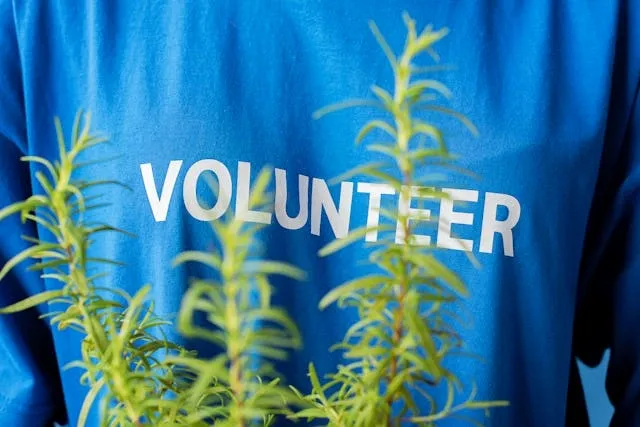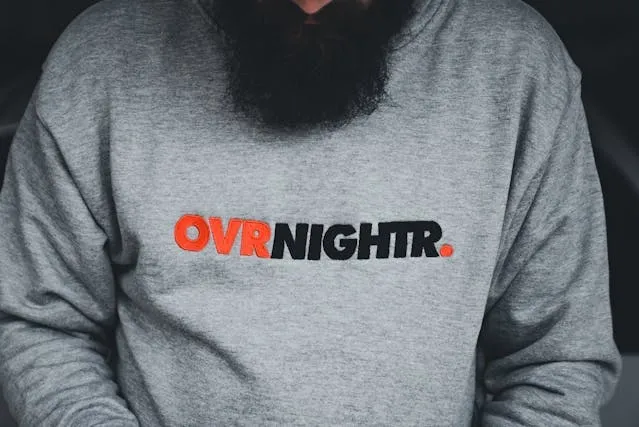How To Iron On Letters: Step-By-Step Process, Tools, Materials And Lasting Tips
Iron-on letters offer a quick, customizable way to apply text to a range of fabrics and apparel. From simple names to complex designs, these iron-on letters allow custom projects that are easy and fun.
In this guide, we cover the essentials for how to iron on letters, from initial setup to maintenance for lasting results. We’ll also look at viable alternatives and troubleshooting tips, as well as advice on the best materials and tools to achieve a clean, polished look.

Key Takeaways
- It is important to prepare your fabric and iron-on letters properly for long-lasting results, particularly if you are working with cotton fabric.
- You should aim to align the letter carefully to ensure accurate placement, and always use the right tools, including parchment paper or Teflon sheets.
- Always test your iron’s heat settings to avoid scorching, and pay close attention to maintenance practices like air-drying and washing clothes inside out.
- We supply high-quality custom clothing patches that can spell messages or be simple letters, offering a more durable and personalized alternative to iron-on letters.
Table of contents
-
How To Iron On Letters
-
How To Iron Letters On A Shirt
-
How To Iron On Letters With Plastic Backing?
-
How To Iron On Vinyl Letters
-
Tips For Making Iron-On Letters Stick Better
-
How To Ensure Proper Placement And Positioning Of Letters
-
What Tools And Materials Are Needed For Ironing On Letters?
-
How To Prepare Fabric For Iron-On Letters
-
What Are Effective Heating Techniques For Iron-On Letters?
-
How Can You Make Iron-On Letters Last Longer?
-
Should You Wash Fabric Before Applying Iron-On Letters?
-
Advanced Tips For Perfect Iron-On Letters
How To Iron On Letters
If you are looking for iron-on letter instructions, the good news is that it is not complicated. To apply iron-on letters, you must begin by prepping your fabric, ensuring it is clean and free of wrinkles. Once you have done this, the process is as follows:
- Set your iron: You will need a medium-high setting for this work - typically ‘cotton’ - and make sure the steam function is deactivated.
- Placement: Arrange the letters on the fabric with the adhesive side down, checking for proper alignment.
- Apply heat: We recommend that you place some parchment paper over the letters to shield against heat. Then, apply the iron with firm, even pressure over the letters, aiming for 10-15 seconds per section until all parts are adhered.
Check each letter before moving to the next and repeat as needed. Common errors include overheating and not allowing the fabric to cool before handling. If you want a more robust alternative, take a look at our custom chenille letter patches.

How To Iron Letters On A Shirt
Applying letters to a shirt requires fabric preparation. This includes pre-washing to prevent shrinkage that may distort the letters. The process is the same as the above, and similar to how to iron on patches.
Here are the basic steps:
- Position the letters, adhesive side down.
- Cover them with a thin cloth to protect the fabric and letter surface.
- Apply consistent, gentle pressure with a medium-heat iron for 10-15 seconds.
Cricut shirts and polyester fabrics may require a slightly lower heat setting to avoid damage. Test your iron’s settings on a small area if you are uncertain about anything. If you are working with delicate fabrics, a Teflon sheet may be helpful for added protection.
Want to make a statement with your team's apparel?
Enhance your uniforms with our custom patches!
Order now and create unique uniforms with our high-quality, personalized patches.
How To Iron On Letters With Plastic Backing?
When iron-on letters have a plastic backing, it makes positioning easy as the plastic holds the letters together until they are ironed on. Again, the process is very similar to what we have already described, but the backing may resist the heat, requiring repeat applications.
Let’s go over the process:
- Arrange the letters on the fabric, ensuring proper alignment.
- Cover with parchment paper or a thin cloth.
- Apply medium heat for 10-15 seconds, pressing down firmly.
- Once the fabric has cooled a little, peel of the plastic backing carefully. If the backing resists, repeat the process with shorter bursts of heat.
It’s important not to pull too quickly. If you do that, you might lift the letters off the fabric again. You should also avoid applying too much pressure initially to prevent the letters from shifting. If you are trying to label a bag, you might want to consider the alternative of designing a custom drawstring polyester tote bag with your name or message for a simpler, more durable option.
How To Iron On Vinyl Letters
If you are exploring how to iron on vinyl letters, you should know that it requires a slightly lower heat than standard letters. This is because vinyl can be sensitive to high temperatures. Set your iron to a medium setting and make sure steam is turned off. Alternatively, you could use a heat press for iron-on letters to get greater control.
- Place the vinyl letters on the fabric, arranged how you want them
- Cover the letters with a protective Teflon sheet.
- Apply heat and firm pressure with the iron for 10-12 seconds.
With vinyl letters, it can be beneficial to press from both the front and back of the fabric to get a better adhesion. Allow the fabric to cool before you check the letters as they may distort or shift while hot.
Stand out from the crowd with our unique designs
Customize your style with our patches!
Order now and make a statement
make your custom patchesTips For Making Iron-On Letters Stick Better
Achieving a lasting bond between your iron-on letters and the fabric revolves around how you handle the application process - iron temperature, pressure, and fabric preparation are key. If you are customizing a hat, you may want to explore different options for custom bucket hats or other types instead of applying iron-on letters.
If you are determined to use this method of customization, here are some tips for a strong adhesion:
- Wash items beforehand, making sure to avoid using any fabric softeners.
- Cover your letters with a Teflon sheet or parchment paper to help with even heat distribution.
- Apply heat to both sides of the fabric if possible for extra durability.
- Re-iron the letters using parchment paper if they start to lift or peel over time.
- Consider adding fabric glue for reinforcement.
- Avoid using a tumble dryer when you wash your garment.

How To Ensure Proper Placement And Positioning Of Letters
For perfectly aligned letters, you should use a ruler or positioning tape to mark the desired placement. Align each letter individually, beginning with the middle of your word and working outwards for balanced spacing.
- Temporary adhesive spray or double-sided tape can help secure letters before ironing.
- Templates or stencils can be useful for repeat designs or bulk projects.
If a letter is not properly aligned, adjust it before the heat application. Practice the placement beforehand to ensure professional-looking results where alignment and spacing are perfect.
Research has found that many people like to add messages to t-shirts that draw attention to their affiliation with a certain group or support for a particular cause or activity. Iron-on letters can help make a statement, but you must ensure they are properly arranged and aligned to make the right impression.
Add a personal touch with our custom patches
Express yourself with our wide range of designs
Order now and make it yours.
What Tools And Materials Are Needed For Ironing On Letters?
There are a few essential tools you will need for successful iron-on letter projects. They include parchment paper or pressing cloths, positioning aids, an iron or heat press, and a flat, heat-resistant surface.
- Parchment paper: These, Teflon sheets, or pressing cloths help prevent adhesive fro sticking to your iron whilst distributing heat evenly and preventing damage.
- Positioning aids: Use things like rules or templates to make alignment easier.
- Heat press or iron: These are essential for applying the heat and pressure to adhere the letters. Transfer paper may be helpful for some types of letters to help with positioning.
Extra materials like a cutting mat or tape may help streamline the process. If you want top-quality results, design custom letter patches with our service and enjoy a simple application and a robust finish.
How To Prepare Fabric For Iron-On Letters
Preparing fabric is a key part of how to iron on letters. You will need to wash and air dry your garment to remove residues that might interfere with adhesion. Avoid fabric softeners as they can leave a residue that creates a barrier.
Iron the fabric before you add any letters to ensure you have a flat, smooth surface to work with. This reduces the risk of wrinkles appearing under the letters. There are some fabrics that generally achieve a better adherence than others. For example, cotton usually works well, while delicate materials like silk might require lower heat settings that could undermine the adhesion process.
If you are working with a thick or textured fabric, pre-pressing the area can create a better surface for the letters. You should always be mindful of the fact that the letters will not be a permanent addition, and you will need to consider how to remove patch glue from fabrics down the line.
Make a statement with our unique designs
Stand out with our custom patches!
Order now and show off your style
make your custom patchesWhat Are Effective Heating Techniques For Iron-On Letters?
Using the right heating techniques ensures iron-on letters adhere smoothly and securely. Your rion should be set to a medium-high heat - the ‘cotton’ setting is usually the optimal level. Here are some tips to get the best possible results for ironing on letters:
- Turn off the steam setting on your iron.
- Place a sheet of parchment paper over the letters to protect them.
- Press firmly when applying heat for 10-15 seconds without moving the iron around.
- With thick fabrics, apply heat to the front and the back.
- Test the iron’s heat on a small area first to avoid scorching.
- Allow the fabric to cool completely before handling.
People form different perceptions about you based on the clothes you wear, and adding lettering and messages can make a bold statement. But it’s important to use effective heating techniques for a secure attachment.
How Long Should You Press Iron-On Letters?
The pressing duration to iron on letters depends on factors like the fabric type, letter material, and iron settings. Here are some tips to help you get the best results:
- Fabric: For most fabrics, the pressing time should be around 10-15 seconds. For delicate fabrics, however, it may be safer to aim for 8-10 seconds to avoid damage.
- Caution: Start with a lower pressing time if unsure, then add a few extra seconds if you find the letters don’t stick well.
- Heating both sides: This can be particularly helpful for thicker fabrics. Apply heat for about 5-7 seconds on each side.
Watch out for adhesive seepage or any lifting around the edges, and always allow the letters to cool fully before handling. If you want letters on a shirt without all this hassle, consider designing a custom t-shirt with your design printed on from the outset.
How Can You Make Iron-On Letters Last Longer?
Prolong the lifespan of your iron-on letters by following proper washing and drying techniques. Even if you get adhesive glue and follow the steps for how to glue patches to fabric, careful washing is essential.
- Wash garments inside out on a gentle cycle with cold water.
- Avoid high heat from tumble drying; air drying is preferable.
- Store garments flat rather than folded to avoid stress on the letters.
If letters start to lift, use fabric glue or reapply heat to reattach them. These care steps will ensure your iron-on letters retain their adhesion over time.
Should You Wash Fabric Before Applying Iron-On Letters?
We recommend that you pre-wash fabric before you iron on letters as this will result in a better adhesion. If you have new garments, they may still have manufacturing residue, so wash them first. Doing so removes any chemicals, dirt, or sizing agents that might interfere with the adhesive bond.
Use a mild detergent and don’t include any fabric softener, as this might leave a coating that may repel adhesive. If you are working with fabrics that shrink, like cotton, pre-washing may help avoid potential distortion after applying the letters.
If you have a non-shrinking fabric or an item that is already clean, it may not be necessary to go through the washing step. Pre-washing is an important precaution in many cases, however, if you want to achieve the best possible adherence.

Advanced Tips For Perfect Iron-On Letters
If you want to achieve a professional finish, advanced techniques include layering iron-on materials, ordering custom fuzzy letter patches, or adding other embellishments like felt or sequins.
If you are layering, apply one set of iron-on letters at a time, letting each layer cool before you apply the next. This prevents overlapping areas from becoming bulky or uneven. When placing letters in curved or hard-to-reach areas, consider using a smaller iron or even a heat pen.
To remove letters without damaging the fabric, you should apply heat from the inside or carefully use some adhesive remover. There are other fabric decorating methods that might be better for your needs than iron-on letters. Consider things like embroidery or custom iron-on patches for a different look.
Frequently Asked Questions About How To Iron On Letters
How To Iron On Letters Easily At Home?
Follow the basic steps: prepare the fabric, set your iron, and apply heat evenly, covering the letters with parchment paper for added protection and even heat distribution.
What Are Some Heating Techniques For Iron-On Letters?
The best technique for most cases is to use a medium-high heat, avoid steam, and press evenly for about 10-15 seconds, working on one section at a time.